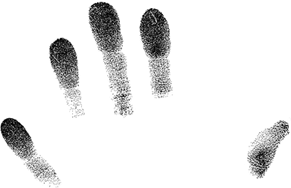Fingerprint Card Acceptance vs. Rejection
We view the taking of fingerprints as a combination of art and science. Years of experience and tens of thousands of prints have given us
the ability to perform fingerprinting effectively with the highest possible
success rate. Our comprehensive knowledge of recipient requirements and all types of fingerprint specifications gives our clients confidence that this vital identification function will be performed correctly. The
rejection of fingerprinting results is an unnecessary and expensive
financial burden on both the individual being printed and the company
requesting the service. We view a rejection as a waste of time, money
and a failure. For this reason we do anything and everything in
our
power to reduce the margin of error for rejected prints.
We are one of the only companies which will provide you with backup cards free of charge.
In addition, many cards are rejected because either the application or
accompanying paperwork is not filled out properly. We are experts in licensing information and confirm all other necessary documentation are properly completed.
Why fingerprints may be rejected
In our best efforts to serve you, and to provide valuable information regarding fingerprinting guidelines we have compiled a list of reasons fingerprints may be rejected. This list, the “ABC’s of Rejection” is the reason why Accu Fingerprinting NY is the fingerprint company of choice throughout New York. Please ask us for our famous “tip sheet” on how to obtain the best prints possible.
Fingerprints are not classifiable (rejected) due to one or more of the following reasons:
- Black ink not used - Other colors are not accepted.
- Fingers not fully rolled - Entire first joint rolled nail to nail. See examples on back of Applicant card.
- Fingerprint impressions missing - Must make notation why one or more fingers were not printed, i.e. amputated or deformed. If a finger is bandaged or injured, the applicant must wait until healed to be printed. The FBI will reject for bandaged or injured fingers.
- Fingerprint pattern is not visible to the naked eye. They must be a detailed impression of the individuals finger.
- Fingers are too dry - As a result the impressions are not accurate and appear faint with minimum ridge detail.
- Fingers are too moist - Try drying fingers before inking to obtain detail in the center of the fingers.
- Images are blurred or indistinct - Images cannot be too dark (too much ink used) or too light (insufficient ink used).
- Impression smudged - Several possibilities: fingers slipped during rolling the prints. Fingerprint tech must be in total control when rolling fingers. Always check to make sure the whole print is clearly defined on card.
- Improper inking - Too light, too dark, or unevenly distributed. Improper inking or Live Scan may need adjustment. Detail must be even.
- Information on card not legible - Please print or type information clearly.
- Information on card is not complete - Please fill our highlighted fields on the card(s).
- Multiple images in boxes - Should be only one fingerprint in each box (Prints 1-10)
- Physical Abnormality - Hard to read ridges, cracks, scars, cuts, bandages, calluses or sweaty hands.
- Poor Image Quality
- Prints and /or slaps are out of sequence or reversed
- Transposed Fingerprints

Guideline for successful fingerprint quality impressions
We have compiled a brief dossier which provides information regarding the nature of fingerprints and outline techniques for taking legible fingerprints. The purpose of this program is to give valuable information to individuals being fingerprinted, and to ensure that our clients and future clients have a checklist to assist them with how fingerprint cards should look when completed.
To receive a copy of this checklist please forward us your email click here or fax number and we will send it to you at once.
The FBI Guide to Taking Legible Fingerprints
To schedule a fingerprinting appointment or to inquire about pricing, please contact us at (212) 227-0307 or via email in the contact us section.


















































































